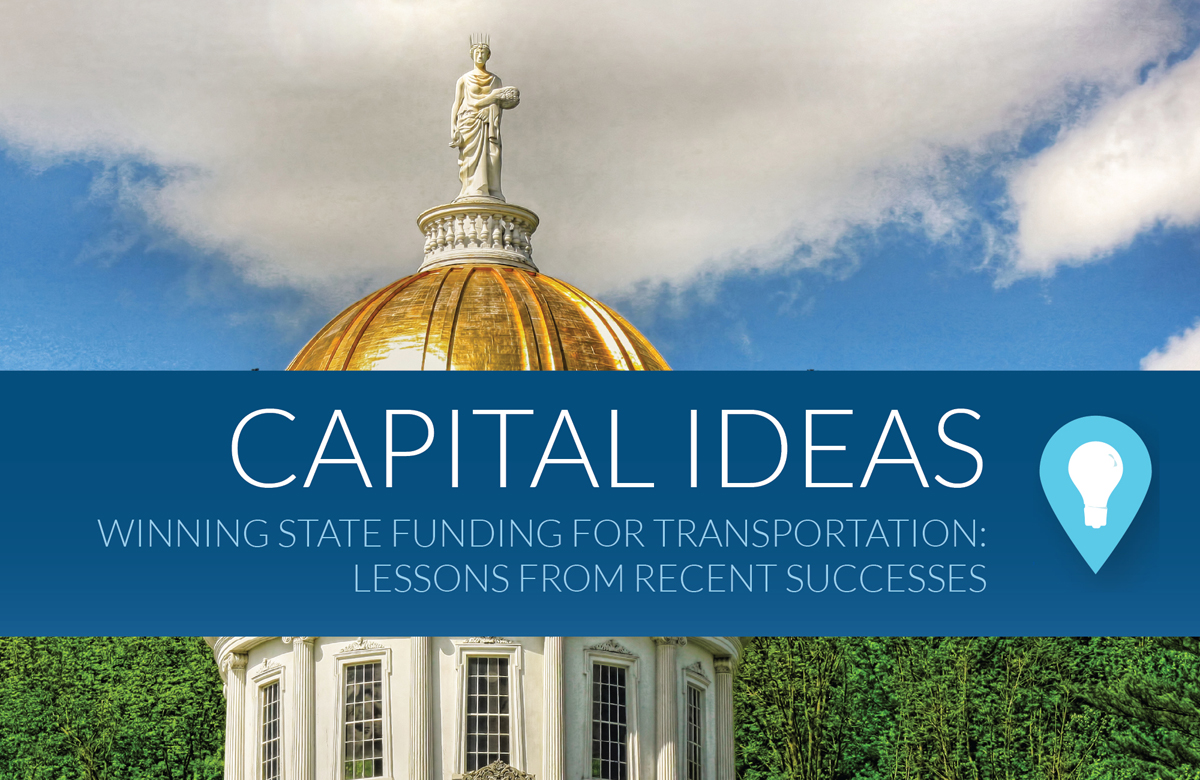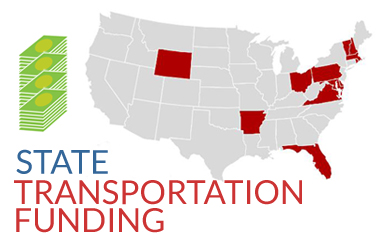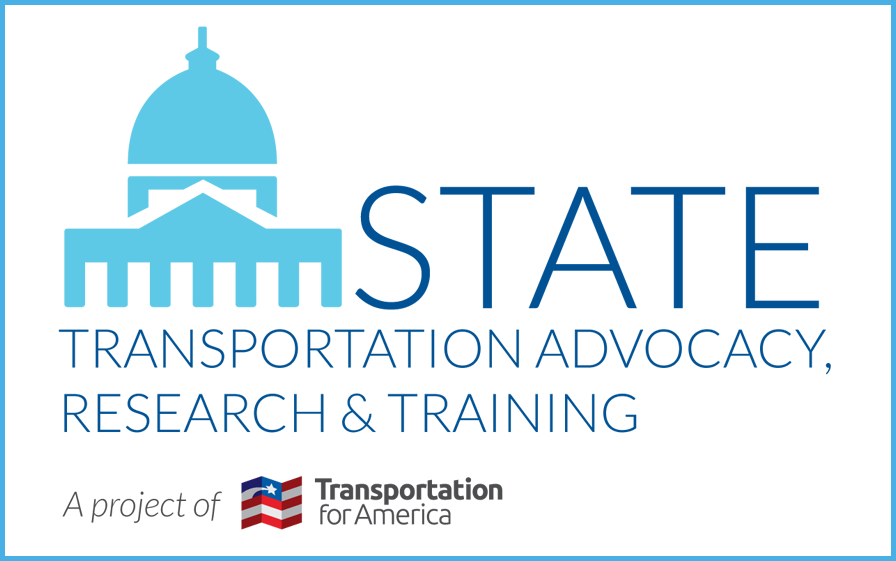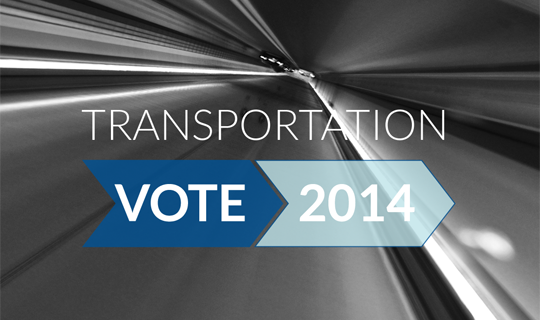In 2013, Republican Governor Tom Corbett and the Pennsylvania legislature worked together to pass legislation raising an additional $2.3 billion per year to invest in transportation, including $1.65 billion for highways and $476 million for transit. The law eliminated the 12 cents-per-gallon state retail gas tax, converting it over five years to a tax applied to wholesale oil sales.
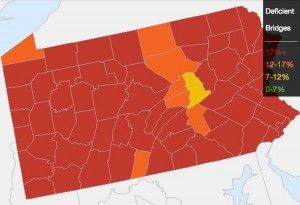
Pennsylvania’s bridges have been amongst the worst in the country for years. In 2013, more than 24% were structurally deficient. From T4America’s 2013 bridge report.
Gov. Corbett, citing major unmet repair and investment needs, kicked off the push for more revenue in his budget address of February 2013. He opened the discussion by proposing to cut taxes at the pump while replacing that revenue — and then some — by lifting a cap on wholesale taxes on oil.
The ensuing debate endured a number of swings before a compromise measure passed with support from both parties. A Republican faction had supported funding only for new highways and repair of existing roads and bridges; a Democratic faction aggressively fought for increased transit funding. While Republicans controlled both chambers, they relied on Democratic votes to move the legislation. When Democratic opposition brought down the bill in June of 2013, both sides continued negotiations and arrived at a broader bill that met the needs of legislators across the state.
In a larger state with several major cities and more remote rural areas, it was critical to demonstrate how the new revenue would help meet a broad variety of needs. The final package supports local roads and bridges, public transportation, multimodal transportation projects, expansion of the Pennsylvania Turnpike and low volume road projects.
The governor and the legislature recognized the importance of getting local communities’ support for the proposal. One way the legislation did this is by creating a Multimodal Transportation Fund to award funding on a competitive basis to local roadway, aviation, freight rail, passenger rail, ports and waterways, and bicycle and pedestrian projects in communities across the state.
In addition to revenue raised at the state level, the legislation enables counties to raise transportation revenue locally by assessing a $5 vehicle registration fee. The measure also provides up to $220 million a year for local roads and bridges — a 60 percent increase over previous allocations for local governments. Collectively these provisions will empower communities across the state to develop multimodal solutions to their transportation challenges.
Labor provisions were another critical, highly political issue in the funding bill — one that nearly brought down the bill yet again. Ultimately the bill included a compromise from pro-labor Democrats to increase the threshold for projects subject to the prevailing wage requirement.
The Keystone Transportation Funding Coalition brought together a broad set of stakeholders to make the case for solving the state’s transportation funding problem, including the highway construction industry, public transit agencies, labor interests, local chambers of commerce, the environmental community, health interests, freight interests and advocates of greater investment in bicycle and pedestrian infrastructure.
Through a campaign dubbed ReConnect, the coalition made the case that increased investment in transportation was critical to the state’s economic competitiveness against neighboring states. The coalition’s messages also emphasized safety and quality of life, pointing to the danger lurking in the state’s overcrowded and poorly maintained transportation system and noting that congestion costs Pennsylvanians an average of $2,900 a year in wasted time and fuel. The coalition focused attention on dangerous intersections across the state, the need for greater investment in roads, transit, airports, bicycle, and pedestrian projects, and the need to reduce congestion so Pennsylvanians can spend more time with their families and friends. These messages helped build bipartisan support for the transportation revenue package and pushed the Pennsylvania legislature to reach a compromise that the Republican governor would sign.
Pennsylvania’s Multimodal Fund
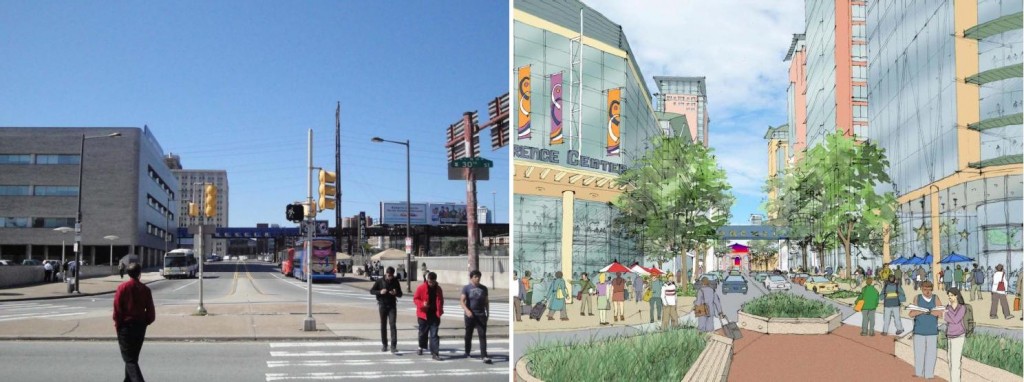
Pennsylvania announced the first round of winning projects for grants from the Multimodal Fund in October 2014. A total of 86 projects in 35 counties received $84 million in funding. In future years more multimodal projects like these will continue to empower communities across the state to develop cross-cutting solutions to transportation challenges.
- Three Crossings in Pittsburgh, a mixed-use development consisting of office and residential units, a transportation facility with vehicle and bicycle parking, EV charging stations, and a transit station.
- A new multimodal terminal serving regional buses, local buses, vans, and ACCESS paratransit, along with a bicycle trail and park-and-ride lot, led by the Port Authority of Allegheny County
- A project in the Township of Abington to improve two SEPTA stations to enhance vehicular and pedestrian access to the area, and act as a catalyst for future residential and commercial redevelopment projects.
- In the largest city, Philadelphia, the water department is leading a funded project to install two new bus shelters, double the width of 5 pedestrian islands, build 27 storm water planters, upgrade 20 curb ramps, and add one mile of bike lanes.
- In northern Pennsylvania, the City of Williamsport is constructing a new intermodal facility, led by River Valley Transit.





